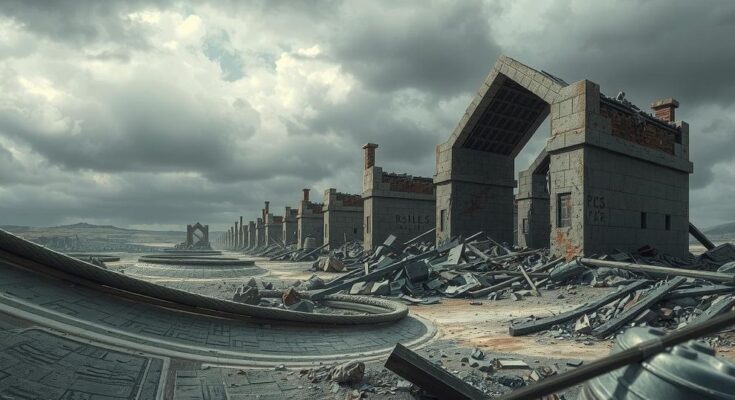Fourteen years after protests ignited a civil war in Syria, President Bashar al-Assad has been ousted, replaced by Ahmad al-Sharaa, a former militant. Despite Sharaa’s promises for peace, violence persists, highlighting the fragility of the new order. International dynamics complicate the situation further, with Iran, Russia, and Israel asserting their interests as ISIS remains an ongoing threat.
The Syrian conflict, which began with widespread protests fourteen years ago, has developed into an ongoing civil war characterized by complex power struggles. Following the recent ousting of President Bashar al-Assad, Syrian Interim President Ahmad al-Sharaa has taken over, having previously been aligned with radical groups. Despite his insistence on peace and the dissolution of his Islamist faction, violence continues as various factions compete for power across Syria.
Assad’s rapid fall within eleven days illustrated the vulnerabilities of his regime amid thin support from allies such as Iran and Russia. This shift has led to a significant number of civilian casualties as Assad loyalists launch ambushes against the new interim government’s security forces, resulting in intensified sectarian violence and casualties, particularly among Alawites.
The situation has elicited international concerns, with both Iran and Russia adopting divergent strategies in response. While Iran’s influence has diminished, new resistance groups reminiscent of Iranian-backed factions in the region have emerged, threatening further instability. Conversely, Russia has maintained its military presence, attempting to stabilize its interests while advocating for an end to the violence through diplomatic channels.
The Kurdish group Syrian Democratic Forces (SDF) plays a prominent role in the ongoing dynamic. The Trump administration continues to assert its commitment to a unified Syria, evident through a recent agreement between the SDF and the interim government that facilitates the SDF’s integration into national governance. Nevertheless, tensions persist as the SDF navigates its complex relations with Turkey, which perceives the group as a threat due to its links to the PKK.
Complications escalate further as Israeli interests conflict with those of the interim government. Israel aims to support the Druze minority while simultaneously targeting military sites associated with Assad. This strategic posture, conveyed through military actions near the Golan Heights, raises eyebrows and complicates the prospect for a cohesive national governance under Sharaa.
Lastly, ISIS continues to pose a significant challenge for Sharaa’s administration, with the group maintaining an insurgent foothold throughout Syria. Following Assad’s removal, ISIS has exploited the chaos to launch numerous attacks, with the U.S. responding by intensifying strikes against its remnants. Trump’s administration remains focused on reducing American military involvement while tackling resurgent threats in the region.
In summary, the Syrian conflict has reached a critical juncture with the emergence of a new leader amid ongoing violence and instability. The situation remains tenuous as historical alliances shift and new factions vie for control. Both international and local actors influence the dynamics at play, making the path to peace and stability exceedingly complex. The continuous threat from ISIS necessitates active international engagement, as the region grapples with the repercussions of longstanding civil conflict.
Original Source: www.newsweek.com




